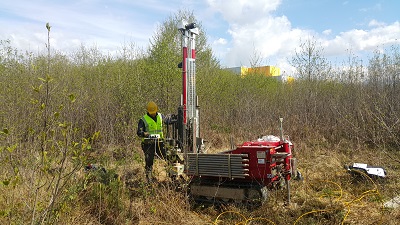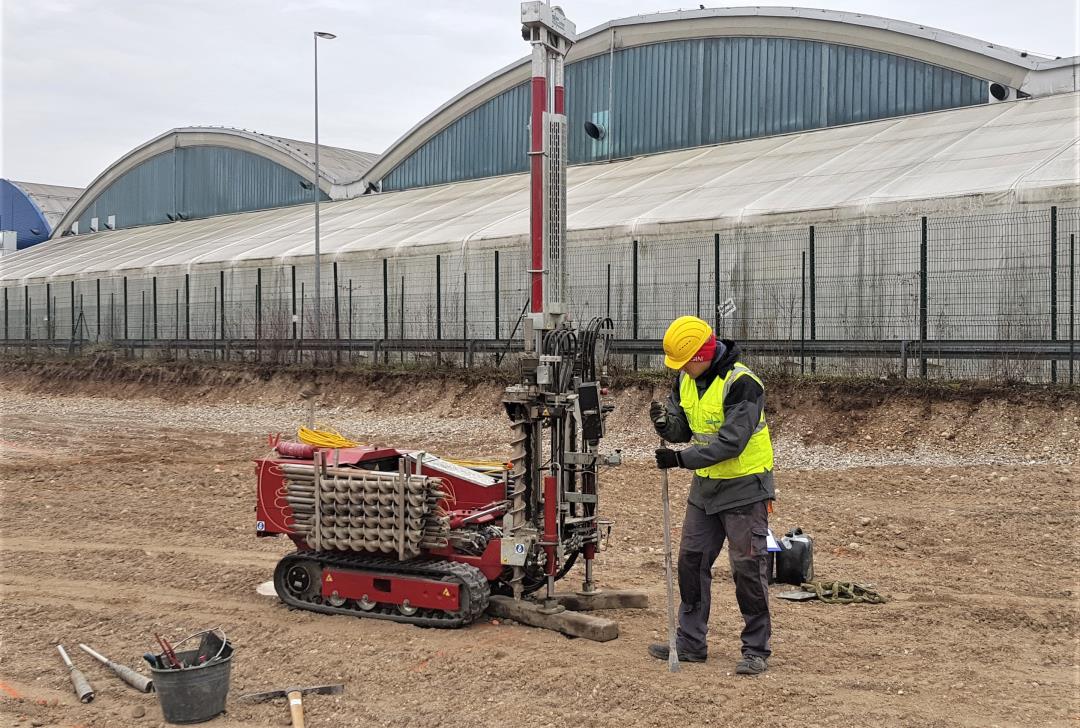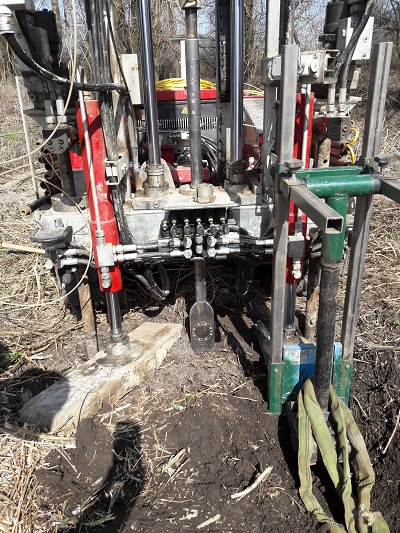Cone Penetration Test (CPTU)
The cone penetration test (piezocone CPTU) test is one of the most versatile tools for soil exploration in existence today. The piezocone and associated pushing equipment provide continuous measurements, excellent repeatability and is cost-effective. Throughout the last few decades, considerable knowledge regarding the use and interpretation of the CPTU has accumulated in the geotechnical community.
 For the Cone Penetration Test (CPTU) SLP uses penetrometer push rig TG 63-150 from PAGANI-Geotechnical. The rig is equiped to preform Static or/and Dynamic test. We use 50MPa and 100MPa Piezocone with TGAS07 acquisition system.
For the Cone Penetration Test (CPTU) SLP uses penetrometer push rig TG 63-150 from PAGANI-Geotechnical. The rig is equiped to preform Static or/and Dynamic test. We use 50MPa and 100MPa Piezocone with TGAS07 acquisition system.
For interpretation of CPTU data SLP uses a software CPeT-IT which provides a fast, easy to use tool for our Geotechnical Engineers to interpret and plot CPTU data.
CPeT-IT takes CPTU raw data and performs basic interpretation in terms of Soil Behaviour Type (SBT) and various other geotechnical parameters using the current published correlations based on the comprehensive review by Lunne, Robertson and Powell (1997), as well as recent updates by Professor Robertson.
Dynamic Probing Super Heavy (DPSH)
The Dynamic Probing Super Heavy test (DPSH) is used to determine the resistance of soils in situ to the intermittent penetration of a cone, driven dynamically. The equipment consists of a 90 degree cone which may be sacrificial or retained for recovery, a series of extension or driving rods, a torque wrench and a driving device.
 DPSH uses a 63.5kg weight over a 760mm drop height, a 20cm2 cone area (51 mm diameter). The extension rods used in the test are 1 meter long, manufactured from 32mm diameter heat-treated alloy steel, with graduations marked every 20cm along their length. The rods are flush-coupled and designed such that rod ends butt-up fully against each other when driving, forming a continuous jointed series with a straight axis.
DPSH uses a 63.5kg weight over a 760mm drop height, a 20cm2 cone area (51 mm diameter). The extension rods used in the test are 1 meter long, manufactured from 32mm diameter heat-treated alloy steel, with graduations marked every 20cm along their length. The rods are flush-coupled and designed such that rod ends butt-up fully against each other when driving, forming a continuous jointed series with a straight axis.
Seismic Flat Dilatometer Test (SDMT)
A dilatometer test consists of pushing a flat blade located at the end of a series of rods. Once at the testing depth, a circular steel membrane located on one side of the blade is expanded horizontally into the soil. The pressure is recorded at specific moments during the test. The blade is then advanced to the next (every 20cm) test depth.
 The SDMT is the combination of the flat dilatometer with an seismic module for the measurement of the shear wave velocity. The seismic module is placed above the DMT blade, equipped with two receivers located at 0.5 m distance. When a shear wave is generated at surface, it reaches first the upper receiver, then, after a delay, the lower receiver.
The SDMT is the combination of the flat dilatometer with an seismic module for the measurement of the shear wave velocity. The seismic module is placed above the DMT blade, equipped with two receivers located at 0.5 m distance. When a shear wave is generated at surface, it reaches first the upper receiver, then, after a delay, the lower receiver.
The seismograms acquired by the two receivers, amplified and digitized at depth, are transmitted to a PC at the surface, that automatically calculates the delay using the Cross Correlation algorithm. VS is obtained as the ratio between the difference in distance between the source and the two receivers and the delay ΔT from the first to the second receiver.
Borehole drilling and in-situ testing
With our subcontractor we also provide geotechnical core drilling and on-shore and off-shore in-situ testing.
- Standard Penetration Testing (SPT)
- Vane Shear Testing
- Pressure Meter Testing
- Piezometer Installations
- Permeability Testing